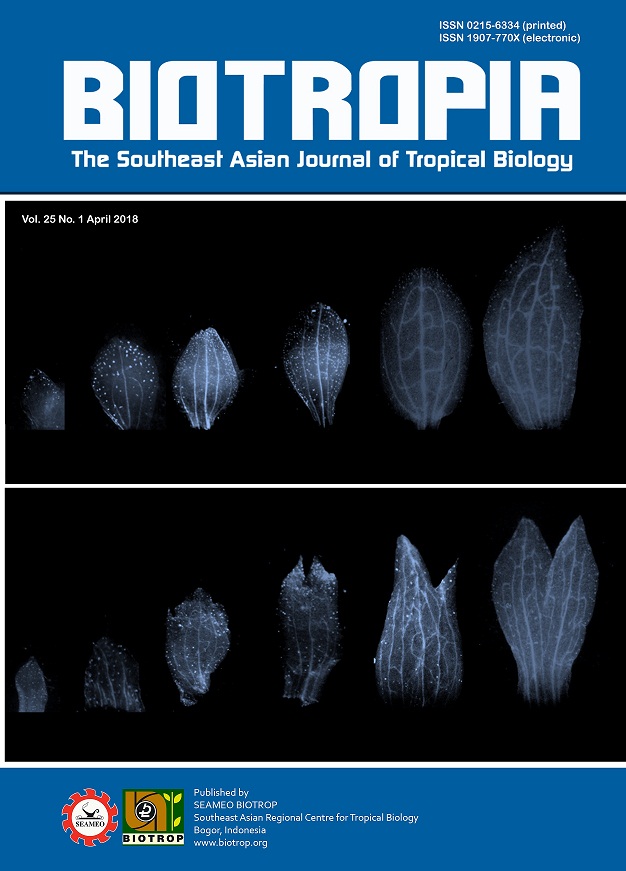
Tags
PHENOTYPIC AND MOLECULAR CHARACTERIZATION OF MULTISHOOTS DEVELOPMENT IN TRANSGENIC Phalaenopsis amabilis (L.) BLUME HARBORING 35S::KNAT1 (KNOTTED-LIKE Arabidopsis thaliana 1)
Content Language : English

Phalaenopsis amabilis (L.) Blume is one of Indonesian natural orchid which has an aesthetic flower and possesses high economic value. The low multiplication rate and long periods of life cycle are the main obstacles to conventionally propagate this orchid. The aims of this research were to analyze the stability of transgenic plant P. amabilis harboring 35S::KNAT1 based on morpho-genomic characterization. KNAT1 gene is reported as a gene that involved in the shoot formation, and it had been successfully introduced into Phalaenopsis amabilis (L.) Blume genome. After seven times regeneration, the confirmation of the transgene existence in the genom is needed to ensure whether the plant could consistently maintain the transgene in its genome and to characterize the shoot development. The experiment was carried out in 3 steps: 1) Co-integration analysis of 35S::KNAT1 into P. amabilis genom; 2) Phenotypic analysis on the multiplication rate, morphological variation and venation pattern; and 3) Protein profile analysis of transgenic plants. The results showed that the survival rate of putative transgenic was 58.7% on NP0 medium and 62.5% on NP SIM medium. PCR analysis confirmed that 82.5% transgenic growth on NP0 and 93.33% on NP SIM contained DNA fragment of KNAT1 gene, NPTII gene and trnL-F intergenic spacer, indicating that those plants are positive transgenic. The 35S::KNAT1 transgenes and phytohormone were independently involved in multishoots formation of P. amabilis transgenic plants. The phenotypic of plantlets were classified into six main criteria, i.e. normal shape, lobed leaves, rosette, elongated stem, cup shoot and widened leaves. The normal type was the most abundant type of variation (± 29%) in both medium. Protein profile showed that all transgenic plants produced 45,8 kDa protein and that was equivalent with molecular weight of KNAT1 protein. Taken together, all those data indicated that 35S::KNAT1 transgene were consistently integrated into the transgenic plant genome.
Link

This work is licensed under a Creative Commons Attribution-NonCommercial-NoDerivatives 4.0 International License.
